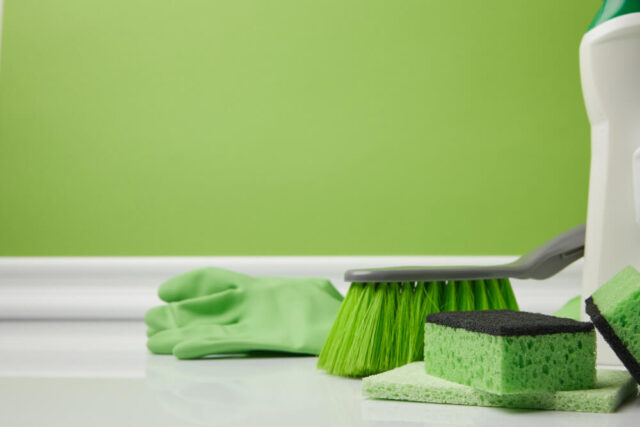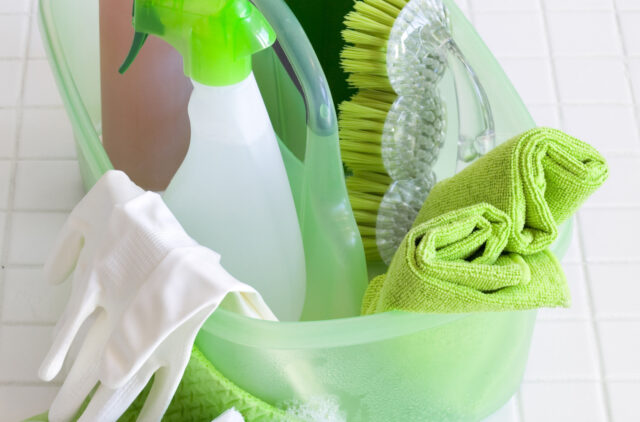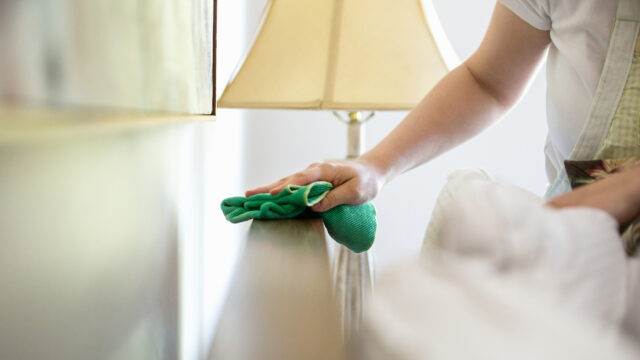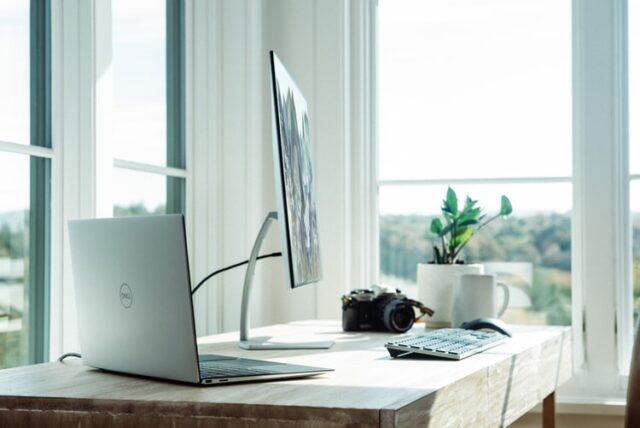
The workplace has made huge changes over the past few decades, from going paperless and favouring digital documents, to implementing cycle to work schemes to help reduce carbon emissions, while also keeping employees fit.
Going green is a trend we can all get behind, but where many businesses fail is considering the eco-friendly option for cleaning. Leading commercial cleaning companies such as GCC FM, typically offer a green cleaning service, but this can often be overlooked, in favour of conventional, chemical cleaning.
In this article, we look at how conventional cleaning can cause damage to not just the environment but employees too and how even the smallest changes within the office can make a big difference. It has been reported that a green office benefits both employee wellbeing, productivity and health, so what’s not to lose?
What Is Green Cleaning?

Green cleaning is switching out those chemical cleaning products for natural-based eco-friendly products like Beavermaids.
This can encompass opting for a green cleaning commercial company, changing the office supplies to an environmentally friendly manufacturer or simply making the products yourself with common household ingredients.
When purchasing products, seek refillable brands that offer reduced packaging options that can be used within refillable bottles. Not only does this reduce waste but also the space needed within delivery vehicles, reducing carbon emissions.
However, it isn’t just about the liquid cleaners you use, to become fully green, you need to consider all other consumable products and see what can be switched out for reusable ones.
For examples, paper towels in washrooms can be changed to washable, reusable towels or low-energy hand dryers.
Assess your current appliances, such as vacuum cleaners, old models often have low energy efficiency. When it comes to replacing a machine, seek out the most energy-efficient within budget. Furthermore, consider investing in an industrial floor scrubber that uses eco-friendly cleaning solutions and has energy-saving features for an even greener approach to cleaning.
Why Is Green Cleaning Important?

Chemical cleaning can have negative effects in many different ways.
When cleaning surfaces, washrooms and floors, it’s important to thoroughly rinse these products away to prevent contamination with our skins and food.
But once we rinse these, where do they go? Water waste plants are responsible for managing our wastewater and while they do make every effort to remove these chemicals, it isn’t a foolproof process.
This water is released into the ecosystem and marine life, such as fish and shellfish unwillingly swim in and consume these toxins.
This can lead to breeding issues, growth problems and even death within this wildlife. There is also no way of monitoring what has been affected, meaning next time you tuck into some fish and chips, you could be eating toxic chemicals.

Chemical cleaners can be highly corrosive, meaning the plastic they are packaged in must be a certain thickness to avoid damage in transit. This plastic is rarely recyclable, meaning these products are a large contributor to landfill waste.
If anyone in your office suffers from breathing-related ailments, such as asthma, conventional cleaners could be doing them a lot of harm.
Monoethanolamines are commonly used in cleaning products, this causes inflammation and if it reaches the lungs of one of these employees, it can cause complications, asthma attacks and could even be fatal.
This is why many schools, nurseries, nursing homes and hospitals have banned these, yet there is no regulation within other workplaces.
Green-certified offices report a 26% increase in cognitive behaviour, a reduction of 30% in sick absences and 6% of employees reported better sleeping patterns, which ultimately leads to higher quality work.
Green Cleaning Misconceptions

With all the above in mind, there should be no reason as to why offices should not make the switch to green cleaning. However, there are still barriers in the way as misinformation and lack of knowledge is causing some to be apprehensive about change.
We discuss the common misconceptions with green cleaning to help you understand the benefits.
The most common misconception is that green cleaning products simply don’t work as well as conventional cleaners.
However, this is wrong. Many believe that the lack of soap suds and lather means products aren’t working. Soap-suds are produced from sulphates and actually have no benefit to the cleaning regime but are added to give the illusion of better results.
It is true that green products may need a little more application, teams with some extra elbow grease, but they certainly can produce the same results as their counterparts.
Some are reluctant to use green cleaning due to the belief that only chemicals will kill dangerous bacteria. However, vinegar, a common ingredient in green cleaning products, has been proven to kill the common cold and flu virus, along with other nasty germs.
However, be aware there have not yet been studies to see if this kills coronavirus, so if you have a case in your office, stick to proven methods first until there has been more research.

Some people believe that cleaning products need a certain ‘smell’ to be effective, something that natural cleaning products rarely possess.
This ‘clean scent’ is actually added to chemical cleaners during the manufacturing process to please the nostrils of the user and has absolutely no cleaning benefit. If you want to add a certain smell to natural cleaning products, simply use a few drops of your favourite essential oil.
One of the biggest factors for not switching is cost. It’s true, green cleaning does cost more than conventional cleaning. This is mainly down to the initial purchase of reusable products, but this is one payment and over time, costs will begin to deplete.
With the above in mind and any misconceptions now cleared up, there really is no reason to not make the switch to green cleaning in your workplace. It will benefit the environment, employees and visitors and even safe money in the long-run.








